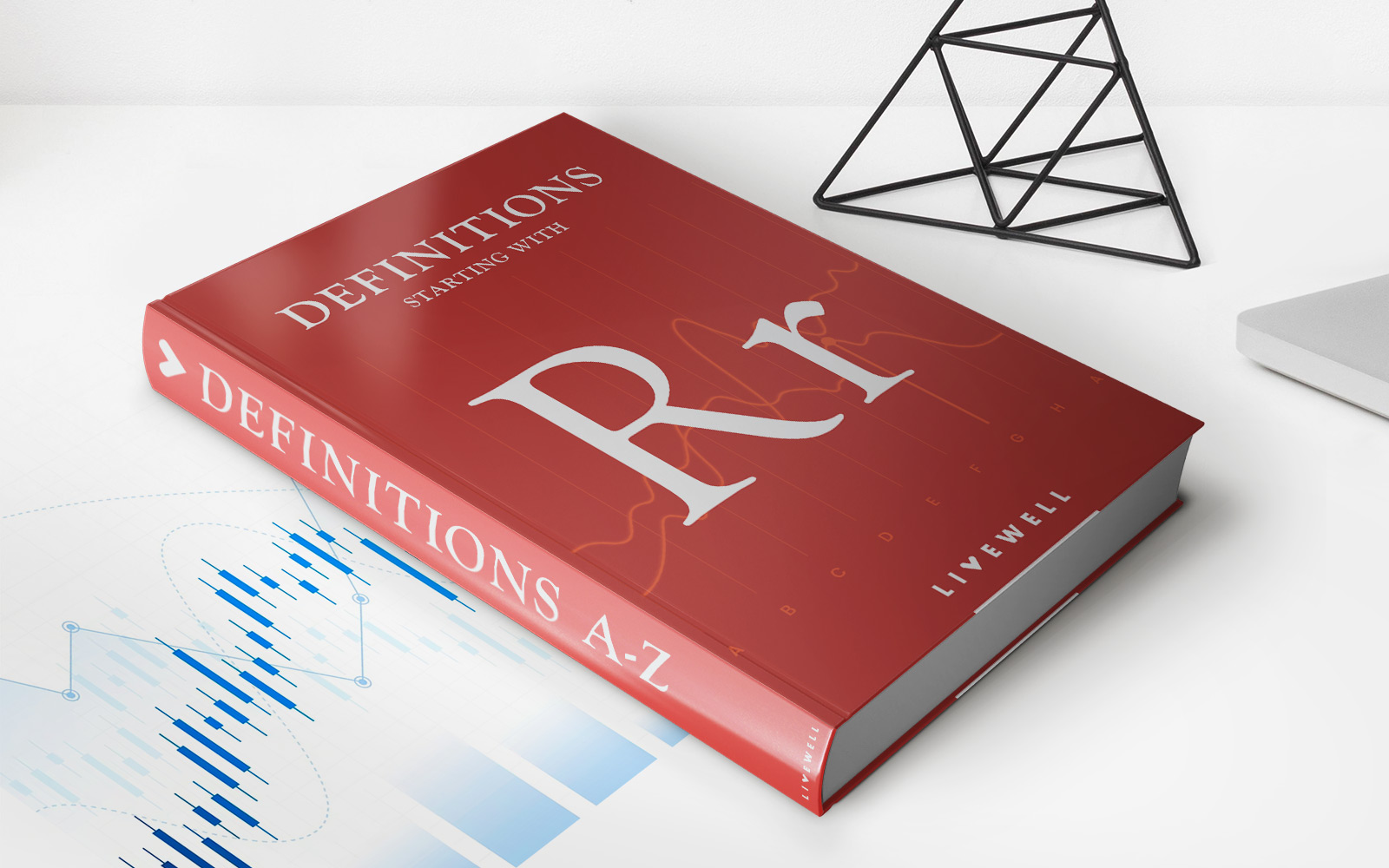

Finance
What Is Revolving Credit Facility
Modified: March 5, 2024
Learn about the benefits and features of revolving credit facilities in finance. Find out how this flexible financing option can help your business manage cash flow and meet short-term funding needs.
(Many of the links in this article redirect to a specific reviewed product. Your purchase of these products through affiliate links helps to generate commission for LiveWell, at no extra cost. Learn more)
Table of Contents
- Introduction
- Definition of Revolving Credit Facility
- How Does a Revolving Credit Facility Work?
- Types of Revolving Credit Facilities
- Advantages of a Revolving Credit Facility
- Disadvantages of a Revolving Credit Facility
- Key Terms and Concepts Related to Revolving Credit Facility
- Examples of Companies Utilizing Revolving Credit Facilities
- Conclusion
Introduction
When it comes to managing finances, businesses often require access to a flexible and convenient source of funding. This is where a revolving credit facility comes into play. A revolving credit facility provides companies with a predetermined line of credit that can be used repeatedly, allowing them to fund various operational and growth initiatives.
Revolving credit facilities are widely used in the business world and offer numerous benefits. They provide a safety net for companies during times of cash flow challenges, enable them to seize opportunities for expansion, and provide a reliable source of working capital. Understanding how revolving credit facilities work, their types, advantages, and disadvantages is essential for businesses looking to optimize their financial management.
In this article, we will delve into the details of revolving credit facilities, exploring their definition, how they work, and the key terms and concepts associated with them. We will also discuss examples of companies that have successfully utilized revolving credit facilities to achieve their financial goals.
So, whether you’re a business owner looking for flexible funding options or a finance enthusiast eager to expand your knowledge, let’s dive into the world of revolving credit facilities and discover how they can benefit your financial strategy.
Definition of Revolving Credit Facility
A revolving credit facility is a financial arrangement in which a lender provides a borrower with a predetermined line of credit. Unlike traditional loans, revolving credit facilities offer the borrower the flexibility to borrow and repay funds multiple times within the agreed-upon credit limit.
Think of it as a revolving door of funds; as the borrower repays the borrowed amount, that credit becomes available again for future use. This makes revolving credit facilities particularly useful for businesses with fluctuating financial needs and cash flow requirements.
Revolving credit facilities are often set up as a line of credit with a specific maturity period, typically ranging from one to five years. During this time, the borrower can draw funds as needed and repay the balance over time. Interest is charged on the outstanding balance, and the borrower has the option to repay and reuse the line of credit indefinitely, as long as the borrowing terms are met.
This type of credit facility is commonly used by companies to support various financial activities, such as funding working capital needs, managing seasonal fluctuations, financing inventory purchases, and investing in growth initiatives. It provides businesses with the flexibility to access funds when needed without having to go through the process of applying for a new loan each time.
Revolving credit facilities can be either unsecured or secured. Unsecured revolving credit facilities do not require any collateral, but may have higher interest rates to compensate for the increased risk to the lender. On the other hand, secured revolving credit facilities are backed by collateral, such as accounts receivable, inventory, or other tangible assets, which can help reduce the interest rates and provide more favorable terms for the borrower.
Overall, revolving credit facilities offer businesses a convenient and reliable way to manage their short-term and periodic funding needs. Their flexibility and revolving nature make them a valuable financial tool for organizations of all sizes and industries.
How Does a Revolving Credit Facility Work?
Understanding how a revolving credit facility works is essential for businesses looking to utilize this financial tool effectively. Here’s a step-by-step breakdown of how a revolving credit facility operates:
- Establishment of the Credit Limit: The lender and borrower negotiate and establish a specific credit limit, which represents the maximum amount of funds the borrower can access through the revolving credit facility. This limit is based on various factors, including the borrower’s creditworthiness, financial stability, and the purpose of the credit facility.
- Accessing Funds: Once the credit facility is established, the borrower can draw funds as needed, up to the agreed-upon credit limit. This can be done through various means, such as writing checks, using a credit card linked to the facility, or transferring funds electronically.
- Repayment and Interest: As the borrower utilizes the revolving credit facility, they are required to make regular repayments. These payments typically consist of both principal and interest. The interest charged is based on the outstanding balance and the agreed-upon interest rate. Unlike a term loan, where fixed installments are made, the repayment schedule for a revolving credit facility is more flexible, allowing borrowers to repay the amount borrowed in full or make minimum payments based on their financial situation.
- Reuse of Available Credit: As the borrower repays the borrowed amount, that credit becomes available again for future use. This characteristic of a revolving credit facility allows businesses to have a continuous source of funding without the need to reapply for credit each time funds are required.
- Review and Renewal: Revolving credit facilities are not indefinite; they have a specified maturity period. Typically, at the end of the agreed-upon term, the facility is reviewed by the lender, and both parties can decide whether to renew or make any adjustments to the credit terms.
The flexibility and revolving nature of this type of credit facility provide businesses with the freedom to manage their funding needs according to their cash flow cycles, seasonal demands, and growth opportunities. It allows for quick access to funds without the lengthy approval process associated with traditional loans.
It’s important to note that the terms and conditions of a revolving credit facility can vary depending on the lender and the borrower’s financial situation. Interest rates, fees, and repayment terms will be negotiated during the establishment of the facility and may be subject to change based on market conditions and the borrower’s creditworthiness.
Now that we understand how a revolving credit facility works, let’s explore the different types of revolving credit facilities available to businesses.
Types of Revolving Credit Facilities
Revolving credit facilities come in various forms, each designed to cater to different business needs and financial situations. Here are the main types of revolving credit facilities:
- Revolving Line of Credit: This is the most common type of revolving credit facility. It provides businesses with a predetermined credit limit that can be accessed and repaid multiple times within the specified time period. The borrower has the flexibility to control when and how much they borrow and repay, as long as they stay within the credit limit.
- Overdraft Protection: Overdraft protection acts as a revolving credit facility for checking accounts. It allows businesses to overdraw their account up to a certain limit when they have insufficient funds to cover a transaction. This type of revolving credit offers immediate access to funds and can be helpful in managing short-term cash flow fluctuations.
- Revolving Credit Card: Some credit card arrangements offer revolving credit as part of their feature. This allows businesses to borrow funds up to a certain credit limit and make repayments based on their convenience. Interest is charged on the outstanding balance, and if the business pays off the balance in full each month, they can avoid interest charges.
- Revolving Trade Credit: Trade credit refers to credit extended by suppliers to their business customers. In some cases, these credit arrangements may be revolving, allowing businesses to make purchases on credit and repay the suppliers within an agreed-upon time frame. This revolving trade credit can help improve cash flow management and enable businesses to procure necessary goods or services without immediate payment.
- Revolving Home Equity Line of Credit (HELOC): Although primarily used for personal financing, a home equity line of credit can also serve as a revolving credit facility for businesses. It allows businesses to borrow against the equity in their residential property, providing them with a flexible and cost-effective source of funding. The borrower can draw and repay funds as needed within the credit limit established by the lender.
These are just a few examples of the types of revolving credit facilities available. Each type offers distinct features and benefits, allowing businesses to choose the one that best suits their specific financial needs and circumstances.
Now that we’ve explored the different types of revolving credit facilities, let’s examine the advantages and disadvantages of utilizing such financial arrangements.
Advantages of a Revolving Credit Facility
Revolving credit facilities offer several advantages that make them an attractive financing option for businesses. Here are some key benefits:
- Flexibility: One of the main advantages of a revolving credit facility is the flexibility it provides. Businesses have the freedom to borrow funds as needed and repay them on a schedule that aligns with their cash flow cycles. This flexibility allows for better financial management and the ability to respond quickly to unforeseen expenses or growth opportunities.
- Convenience: Compared to traditional loans, revolving credit facilities offer unparalleled convenience. Once the credit limit is established, businesses can access funds instantly without having to go through multiple loan applications. This saves time and effort, allowing businesses to focus on their operations and growth strategies.
- Cost-effective: Revolving credit facilities often come with competitive interest rates, especially for secured facilities. Additionally, businesses only pay interest on the amount they borrow, rather than on the entire credit limit. This cost-effective nature of revolving credit facilities can help businesses manage their financing costs more efficiently.
- Cash flow management: A revolving credit facility can be an effective tool for managing cash flow fluctuations. It provides businesses with a safety net during periods of low revenue or unexpected expenses, ensuring that they have access to working capital when needed. This can help stabilize operations, cover short-term obligations, and maintain a healthy cash flow position.
- Opportunity for growth and expansion: With a revolving credit facility in place, businesses have the financial flexibility to pursue growth opportunities. Whether it’s investing in new equipment, expanding into new markets, or launching new products, the availability of funds allows businesses to seize opportunities without delay.
These advantages highlight the significance of revolving credit facilities in supporting a company’s financial needs. However, it’s important to consider the potential disadvantages as well. Let’s explore those in the next section.
Disadvantages of a Revolving Credit Facility
While revolving credit facilities offer numerous advantages, it’s important to be aware of the potential disadvantages associated with these financial arrangements. Here are some key considerations:
- Interest Costs: One of the primary downsides of revolving credit facilities is the potential for higher interest costs. The convenience and flexibility of accessing funds as needed come at a price. Businesses need to carefully manage their borrowing and repayment strategies to avoid accumulating excessive interest charges over time.
- Potential for Overborrowing: The availability of a revolving credit facility can tempt businesses to borrow more than necessary. Without proper financial discipline and planning, it’s easy to fall into a cycle of continual borrowing, leading to increased debt and financial strain. Businesses must exercise caution and only utilize the credit facility when it aligns with their strategic financial goals.
- Risk of Default: Revolving credit facilities typically require regular payments based on the outstanding balance. If a business fails to meet these payment obligations, it can lead to default, which can result in negative impacts on the credit rating and relationships with lenders. It’s crucial for businesses to closely monitor their cash flow and ensure timely repayments to mitigate the risk of default.
- Impact on Credit Score: Utilizing a revolving credit facility can affect a business’s credit score. While having access to credit can be beneficial, excessive borrowing or late payments can have a negative impact on the credit rating. This, in turn, can make it more challenging to secure favorable financing terms in the future.
- Collateral Requirements: Secured revolving credit facilities may require businesses to provide collateral, such as inventory, accounts receivable, or property. This poses a risk as the lender has the right to seize the collateral in the event of default. Businesses must carefully assess the collateral requirements and be prepared to fulfill them to secure the credit facility.
While these disadvantages should be taken into consideration, they do not diminish the value of revolving credit facilities. With careful financial management, proper planning, and a disciplined approach, businesses can effectively harness the benefits of revolving credit while mitigating the associated risks.
Now that we’ve explored the advantages and disadvantages of revolving credit facilities, let’s delve into some key terms and concepts related to this financial tool.
Key Terms and Concepts Related to Revolving Credit Facility
Understanding the key terms and concepts associated with revolving credit facilities is essential for businesses looking to navigate the world of credit financing. Here are some important terms to know:
- Revolving Credit Limit: The maximum amount of credit available to the borrower through the revolving credit facility. It is predetermined and agreed upon by the lender and borrower.
- Drawdown: The process of accessing funds from the revolving credit facility. The borrower can draw funds up to the credit limit when needed.
- Interest Rate: The percentage charged by the lender on the outstanding balance of the revolving credit facility. It is the cost of borrowing and is typically expressed as an annual percentage rate (APR).
- Minimum Payment: The minimum amount the borrower must repay on a regular basis to fulfill their obligations. It is usually a percentage of the outstanding balance.
- Repayment Term: The period within which the borrower is required to repay the borrowed amount. It can vary depending on the credit facility agreement.
- Collateral: Assets pledged by the borrower to secure a revolving credit facility. Collateral provides security to the lender in case of default and can include real estate, inventory, accounts receivable, or other valuable assets.
- Annual Fee: Some revolving credit facilities have an annual fee associated with them. This fee is charged by the lender for maintaining the credit facility and can vary depending on the terms of the agreement.
- Credit Terms: The specific conditions and requirements set by the lender for utilizing the revolving credit facility. It includes interest rate, repayment terms, fees, and any other terms agreed upon.
- Default: Failure by the borrower to meet the obligations outlined in the credit facility agreement, such as non-payment or late payments. Default can result in penalties, fees, and damage to the borrower’s credit rating.
- Renewal: At the end of the agreed-upon term, the credit facility is typically reviewed by the lender. Both parties can decide whether to renew the facility, adjust the terms, or terminate the agreement.
Understanding these key terms and concepts will help businesses navigate the revolving credit facility process, negotiate the terms of the facility, and make informed financial decisions.
Now that we have a solid understanding of the key concepts, let’s explore some real-world examples of companies that have utilized revolving credit facilities to their advantage.
Examples of Companies Utilizing Revolving Credit Facilities
Many successful companies have utilized revolving credit facilities to support their financial needs and achieve their strategic objectives. Here are a few examples:
- Apple Inc.: As one of the world’s leading technology companies, Apple has utilized revolving credit facilities to manage its working capital needs and fund its operations. The company has established credit facilities with various financial institutions, allowing it to access funds when necessary and maintain a strong financial position.
- Amazon.com, Inc.: Amazon, the global e-commerce giant, has relied on revolving credit facilities to support its growth and expansion initiatives. These credit arrangements provide Amazon with a continuous source of funds to invest in new technologies, infrastructure, and acquisitions, enabling the company to maintain its competitive edge in the market.
- The Coca-Cola Company: Coca-Cola, the beverage industry leader, has utilized revolving credit facilities to manage its cash flow and fund its day-to-day operations. These credit arrangements provide the company with the flexibility to navigate seasonal fluctuations in demand and invest in marketing campaigns and product innovation.
- General Electric (GE): GE, a multinational conglomerate, has relied on revolving credit facilities to support its diverse business divisions. These credit arrangements enable GE to access funds for investments in research and development, infrastructure projects, and acquisitions, helping the company stay at the forefront of innovation and maintain its global presence.
- Procter & Gamble (P&G): P&G, a global consumer goods company, has utilized revolving credit facilities to manage its working capital needs and finance its operations. These credit arrangements provide P&G with the flexibility to fund manufacturing, sales, and marketing activities, ensuring a steady supply of its products to consumers worldwide.
These are just a few examples, but they demonstrate how revolving credit facilities can be instrumental in supporting the financial growth and stability of well-established companies in various industries. Whether it’s funding day-to-day operations, supporting expansion plans, or managing seasonal fluctuations, revolving credit facilities offer businesses the necessary flexibility and convenience to meet their financial obligations and pursue growth opportunities.
Now that we have explored real-world examples, let’s conclude our journey into the realm of revolving credit facilities.
Conclusion
Revolving credit facilities are a valuable financial tool for businesses, providing them with flexible and convenient access to funds. With the ability to borrow and repay funds within the agreed-upon credit limit, businesses can effectively manage their working capital needs, seize growth opportunities, and navigate cash flow fluctuations.
We have explored various aspects of revolving credit facilities, including how they work, their types, advantages, and disadvantages. By understanding these key concepts, businesses can make informed decisions when considering revolving credit as a financing option.
The advantages of revolving credit facilities are evident. They offer flexibility, convenience, and cost-effectiveness, allowing businesses to tailor their borrowing and repayment strategies to their unique financial situations. Revolving credit facilities also support cash flow management, enable growth and expansion, and provide a safety net during challenging financial times.
However, it is important to be mindful of the potential disadvantages, such as interest costs, overborrowing risks, and the impact on credit scores. With proper financial discipline and planning, businesses can mitigate these risks and leverage the benefits of revolving credit facilities to their advantage.
Real-world examples have illustrated how prominent companies have utilized revolving credit facilities to fund their operations, support growth initiatives, and enhance their financial flexibility. These examples serve as inspiration for businesses of all sizes and industries to explore the potential of revolving credit facilities in optimizing their financial strategies.
In conclusion, revolving credit facilities provide businesses with a powerful tool to manage their finances and propel their growth. When utilized responsibly and in alignment with strategic objectives, revolving credit facilities can be a valuable asset in the journey towards financial success.














